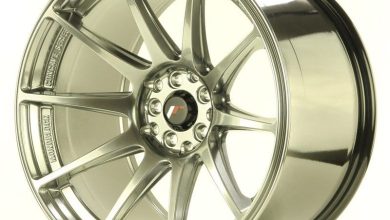Revitalize Your Automotive With Engine Rebuilds
In the fast-paced world of automotive enthusiasts, maintaining peak engine performance is a top priority. When the familiar hum of your vehicle begins to waver, it might be time to consider an automotive engine rebuild. The goal for this also change the overall capability such as speed, acceleration and aggressiveness. Here, you will walk through the intricacies of engine rebuilding, ensuring that your ride roars back to life with newfound vigor.
Understanding the Need for Engine Rebuilds
Over time, engines naturally undergo wear and tear, leading to decreased efficiency and performance. Factors such as high mileage, inadequate lubrication, and suboptimal maintenance can accelerate this process. An automotive engine rebuild becomes essential when you notice signs like decreased power, excessive smoke, or irregular noises emanating from the hood.
The Benefits of an Automotive Engine Rebuild
1. Restored Performance
A well-executed engine rebuild breathes new life into your vehicle, restoring lost power and efficiency. This process involves replacing worn-out components, ensuring optimal combustion, and addressing any underlying issues.
2. Enhanced Fuel Efficiency
A rebuilt engine operates more efficiently, translating to improved fuel economy. This not only benefits your wallet but also aligns with the growing emphasis on eco-friendly driving practices.
3. Extended Engine Lifespan
By addressing wear and tear, an engine rebuild can significantly extend the lifespan of your vehicle. This is a cost-effective alternative to investing in a new car and allows you to enjoy your trusted ride for years to come.
The Step-by-Step Process of Engine Rebuilding
1. Diagnosis
A thorough assessment of your engine’s condition is the first step. Identify worn-out components, assess the extent of damage, and determine the necessary repairs.
2. Disassembly
Carefully disassemble the engine, documenting the condition of each part. This stage reveals hidden issues and provides a clear picture of the rebuild’s scope.
3. Cleaning and Inspection
Clean all components meticulously and inspect for damage. This step is crucial for identifying parts that can be reused and those that require replacement.
4. Replacement of Parts
Replace worn-out components with high-quality, compatible parts. This may include pistons, rings, bearings, and gaskets.
5. Reassembly
Skillfully reassemble the engine, ensuring precise alignment and proper torquing of bolts. Attention to detail at this stage is paramount for the engine’s longevity.
6. Testing
Conduct thorough tests to ensure the rebuilt engine operates optimally. This may involve compression tests, oil pressure checks, and monitoring for unusual noises.
Choosing a Professional for Your Engine Rebuild
While some automotive enthusiasts may opt for a DIY approach, entrusting your engine rebuild to a qualified professional ensures precision and expertise. Look for certified mechanics, car builder, racing builder, speed shop, engine mechanic, restoration shop, used car shop or specialized automotive shops with a proven track record in engine rebuilding.
An automotive engine rebuild is a transformative process that can breathe new life into your beloved vehicle. By addressing wear and tear, restoring performance, and enhancing efficiency, this endeavor ensures your ride continues to turn heads on the open road. Don’t let engine troubles dampen your driving experience; revitalize your ride with a comprehensive engine rebuild today.






